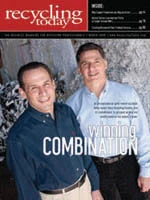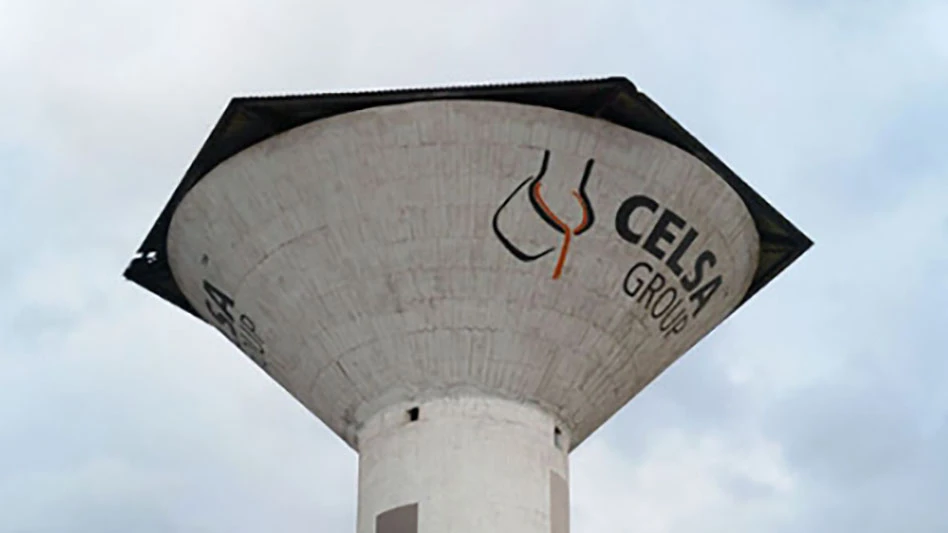One of the Washington, D.C. area’s most experienced demolition contractors has successfully taken down the old Waterside Mall, a 4-story, heavily-reinforced concrete structure totaling 1.2 million square feet. Among other challenges, the project generated excessive dust, and crews were able to effectively suppress both surface dust and airborne particles with portable high-performance misting equipment, despite the crowded urban location and proximity to the local Metro station tunnel entrance—just 70 feet from the razed structure—in what has been called a "surgical" demolition project.
UP TO THE CHALLENGE
Engineers from Wrecking Corp. of America of Alexandria, Va., knew from the outset that the densely populated area and proximity to remaining structures would require extraordinary precautions. "The Metro station entrance has a way of creating a vacuum," explains executive VP Terry Anderson. "If the wind is blowing the wrong way, the dust gets sucked right down. The site was also hemmed in on three sides by structures that needed to be preserved, so we had to do a very selective removal, while protecting the entire surrounding area from the nuisance and potential hazard of airborne dust."
After researching possible solutions, Anderson decided to rent a DustBoss DB-60. As the largest of the suppression designs from Dust Control Technology, the unit atomizes water droplets to the optimum size for particle capture, launching them 200 feet or more with a 25-hp fan that generates 30,000 CFM (nearly 850 cubic meters per minute). With its built-in oscillation, the DB-60 can effectively cover nearly half an acre with a fine, dust-trapping mist.
THE TAKEDOWN
WCA began the project in November of 2007, and the old structure did not go easily. "This was one of the more difficult buildings we’ve taken down in some time," Anderson says. He has no explanation for why a decades-old mall was built with 20-inch floor slabs, when the standard is 9 inches. "We had to fight down every step," he says. It’s also the largest contiguous building that the company has ever removed.
In addition to the crowded urban environment, the project was complicated by structures that had to be preserved, including a deli attached to the nearby grocery store. Unfortunately, sections of the structure to be demolished were directly on top of it. "We saw cut through the 20-inch slabs of concrete," Anderson recalls. "Then we had to carefully remove all debris, while protecting the integrity of the buildings to remain and controlling the large amounts of dust that were generated by all those activities."
WCA employed a high-reach excavator for the general demolition work, a 100,000-pound Komatsu PC400 with an 85-foot boom. Kinshofer dedicated shears with 360 degree rotation were used for cutting the extensive amount of reinforcing steel, more than 5,000 tons overall.
Anderson’s crews also made extensive use of a 90-ton truck crane and wrecking ball. "It’s a technology that virtually never breaks down," he says. "And it leaves a small carbon footprint." WCA also used a 140,000-pound Caterpillar 365 track-mounted excavator to take down the structures, along with three Hitachi 450 excavators with bucket attachments and four Hitachi 330 excavators with a variety of attachments that included concrete pulverizers and demolition hammers.
WCA performed all concrete crushing and recycling on-site, with an Extec C10 crusher used to process approximately 70,000 cubic yards of material. The crushed product was used for non-structural fill and backfilling.
"By nature, concrete work generates a lot of dust," Anderson says. "We felt we had to take strong measures for control on this project."
Wrecking Corporation of America has completed hundreds of high-profile projects in downtown Washington, D.C. and the surrounding metro area since the company’s inception in 1974, including 1900 Pennsylvania Avenue and the former Washington Convention Center. WCA says it specializes in commercial demolition and excavation, with considerable experience in cramped urban locations as well as sprawling multi-building complexes. C&DR
This article was submitted on behalf of Dust Control Technology, Peoria, Ill.

Explore the March 2009 Issue
Check out more from this issue and find your next story to read.
Latest from Recycling Today
- Greenwave Technology pares back losses in Q3
- Lindner shredders prepare Brazilian plastic for recycling
- China ups steel output while other nations cut back
- ReElement, Posco partner to develop rare earth, magnet supply chain
- Comau to take part in EU’s Reinforce project
- Sustainable packaging: How do we get there?
- ReMA accepts Lifetime Achievement nominations
- ExxonMobil will add to chemical recycling capacity





